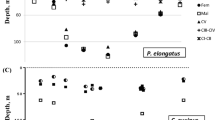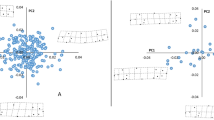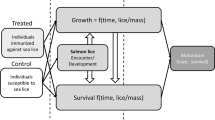Abstract
THE numerical regulation of the codling moth has been investigated in the Australian Capital Territory. Each year, part of the population undergoes two complete generations and begins a third, most individuals of which fail to survive. The other part of the population enters diapause, and the species overwinters as mature, diapausing larvæae produced mainly in the second generation.
This is a preview of subscription content, access via your institution
Access options
Subscribe to this journal
Receive 51 print issues and online access
$199.00 per year
only $3.90 per issue
Buy this article
- Purchase on Springer Link
- Instant access to full article PDF
Prices may be subject to local taxes which are calculated during checkout
Similar content being viewed by others
References
Nicholson, A. J., Aust. J. Zool., 2, 20 (1955).
Nicholson, A. J., and Bailey, V. A., Proc. Zool. Soc. Lond., 555 (1935).
Nicholson, A. J., Cold Spring Harbor Symp. Quant. Biol., 22, 160 (1957).
MacLellan, C. R., Canad. Ent., 91, 673 (1959).
Author information
Authors and Affiliations
Rights and permissions
About this article
Cite this article
GEIER, P. Numerical Regulation of Populations of the Codling Moth, Cydia pomonella (L.). Nature 190, 561–562 (1961). https://doi.org/10.1038/190561b0
Issue Date:
DOI: https://doi.org/10.1038/190561b0
Comments
By submitting a comment you agree to abide by our Terms and Community Guidelines. If you find something abusive or that does not comply with our terms or guidelines please flag it as inappropriate.



